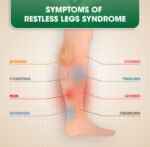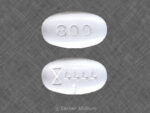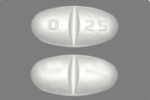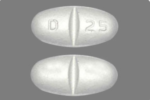This review is an update of a review published in 2011, itself a major update of previous reviews published in 2005 and 2000, investigating the effects of gabapentin in chronic neuropathic pain (pain due to nerve damage). Antiepileptic drugs are used to manage chronic neuropathic pain and fibromyalgia.
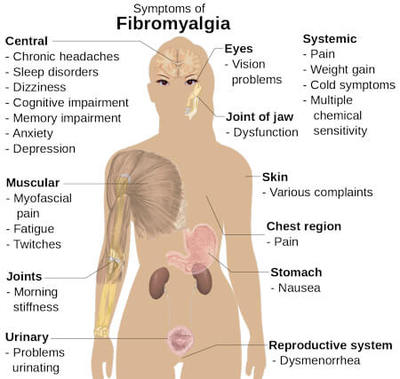
OBJECTIVES:
To assess the analgesic efficacy and adverse effects of gabapentin in chronic neuropathic pain and fibromyalgia.
SEARCH METHODS:
We identified randomised trials of gabapentin for chronic neuropathic pain or fibromyalgia by searching the databases MEDLINE (1966 to March 2014), EMBASE (1980 to 2014 week 10), and CENTRAL in The Cochrane Library (Issue 3 of 12, 2014). We obtained clinical trial reports and synopses of published and unpublished studies from Internet sources, and searched Clinicaltrials.gov. Searches were run originally in 2011 and the date of the most recent search was 17 March 2014.
SELECTION CRITERIA:
Randomised, double-blind studies reporting the analgesic and adverse effects of gabapentin in neuropathic pain or fibromyalgia with assessment of pain intensity, pain relief, or both, using validated scales. Participants were adults.
DATA COLLECTION AND ANALYSIS:
Three review authors independently extracted efficacy and adverse event data, examined issues of study quality, and assessed risk of bias. We performed analysis using three tiers of evidence. First tier evidence derived from data meeting current best standards and subject to minimal risk of bias (outcome equivalent to substantial pain intensity reduction, intention-to-treat analysis without imputation for dropouts; at least 200 participants in the comparison, 8 to 12 weeks duration, parallel design), second tier from data that failed to meet one or more of these criteria and were considered at some risk of bias but with adequate numbers in the comparison, and third tier from data involving small numbers of participants that were considered very likely to be biased or used outcomes of limited clinical utility, or both.For efficacy, we calculated the number needed to treat to benefit (NNT), concentrating on at least 50% pain intensity reduction, and Initiative on Methods, Measurement and Pain Assessment in Clinical Trials (IMMPACT) definitions of at least moderate and substantial benefit. For harm we calculated number needed to treat for harm (NNH) for adverse effects and withdrawal. Meta-analysis was undertaken using a fixed-effect model. We emphasised differences between conditions now defined as neuropathic pain, and other conditions like masticatory pain, complex regional painsyndrome type 1 (CRPS-1), and fibromyalgia.
MAIN RESULTS:
Seven new studies with 1919 participants were added. Another report (147 participants) provided results for a study already included, but which previously had no usable data. A further report (170 participants) used an experimental formulation of intrathecal gabapentin. Thirty-seven studies (5633 participants) studied oral gabapentin at daily doses of 1200 mg or more in 12 chronic pain conditions; 84% of participants were in studies of postherpetic neuralgia, painful diabetic neuropathy or mixed neuropathic pain. There was no first tier evidence.Second tier evidence for the outcome of at least 50% pain intensity reduction, considered valuable by patients with chronic pain, showed that gabapentin was significantly better than placebo in postherpetic neuralgia (34% gabapentin versus 21% placebo; NNT 8.0, 95% CI 6.0 to 12) and painful diabetic neuropathy (38% versus 21%, NNT 5.9, 95% CI 4.6 to 8.3). There was insufficient information in other pain conditions to reach any reliable conclusion. There was no obvious difference between standard gabapentin formulations and recently-introduced extended-release or gastro-retentive formulations, or between different doses of gabapentin.Adverse events occurred significantly more often with gabapentin. Persons taking gabapentin could expect to have at least one adverse event (62%), withdraw because of an adverse event (11%), suffer dizziness (19%), somnolence (14%), peripheral oedema (7%), and gait disturbance (9%). Serious adverse events (3%) were no more common than with placebo.There were insufficient data for direct comparisons with other active treatments, and only third tier evidence for other painful conditions.
AUTHORS’ CONCLUSIONS:
There was no top tier evidence that was unequivocally unbiased. Second tier evidence, with potentially important residual biases, showed that gabapentin at doses of 1200 mg or more was effective for some people with some painful neuropathic pain conditions. The outcome of at least 50% pain intensity reduction is regarded as a useful outcome of treatment by patients, and the achievement of this degree of pain relief is associated with important beneficial effects on sleep interference, fatigue, and depression, as well as quality of life, function, and work. About 35% achieved this degree of pain relief with gabapentin, compared with 21% for placebo. Over half of those treated with gabapentin will not have worthwhile pain relief. Results might vary between different neuropathic pain conditions, and the amount of evidence for gabapentin in neuropathic pain conditions except postherpetic neuralgia and painful diabetic neuropathy, and in fibromyalgia, is very limited.The levels of efficacy found for gabapentin are consistent with those found for other drug therapies in postherpetic neuralgia and painful diabetic neuropathy.
Gabapentin for Chronic Neuropathic Pain and Fibromyalgia
Study Population: Adults with postherpetic neuralgia or diabetic neuropathy
Efficacy Endpoints: 50% pain intensity reduction
Harm Endpoints: Dizziness, somnolence, ataxia, edema
Narrative: Neuropathic pain, when the pain generator is the nerve itself, occurs in a variety of conditions including diabetes mellitus and postherpetic neuropathy. The exact mechanism of action for these conditions is unclear. Some speculate that aberrant nerve signal modulation may be a culprit, which would explain why neuropathic pain rarely responds adequately to traditional analgesics, and why an effective treatment has proven elusive. Further complicating matters for patients, neuropathic pain typically is chronic in nature. Given the chronic nature and the poorly understood etiology, neuropathic pain is a challenge to treat and to study.
Patients generally consider a 50% reduction in their chronic pain a useful outcome because it has been associated with important beneficial effects on sleep interference and depression.1 Physicians have tried a variety of medicines off-label including opiates, antidepressants, and antiepileptics to relieve patients’ neuropathic pain. One such drug, gabapentin (Neurontin), received approval by the U.S. Food and Drug Administration (FDA) in 1993 as an adjunct medicine for partial seizures and additional FDA approval in 2002 for the treatment of postherpetic neuralgia.2 Gabapentin remains off-label when used to treat diabetic neuropathy.
This summary uses a Cochrane review, updated in 2014, to address the efficacy of gabapentin compared with placebo to palliate neuropathic pain.3 The Cochrane review includes 37 trials enrolling more than 5,600 patients. Overall, there were limited quality data to permit analysis of other neuropathic indications other than postherpetic neuralgia and diabetic neuropathy. Oral gabapentin dosed at 1,200 mg or more daily demonstrated a 50% reduction in pain intensity, with a number needed to treat (NNT) of eight for postherpetic neuralgia and an NNT of six for diabetic neuropathy. Gabapentin treatment was associated with several adverse effects including dizziness (number needed to harm [NNH] = 8), somnolence (NNH = 11), ataxia (NNH = 13), and edema (NNH = 21). There were no obvious differences in patient response with doses greater than 1,200 mg. The NNT for gabapentin is similar to a recent meta-analysis that demonstrated an NNT of seven.4
Caveats: The Cochrane reviewers indicated that high-quality evidence was lacking, which limits the strength of the conclusions and the resulting NNTs in this analysis. Moreover, only postherpetic neuralgia and diabetic neuropathy had been studied adequately to generate numerical estimates for the purposes of this review. Although patients with other neuropathic conditions were included in the Cochrane review, specifically fibromyalgia, the efficacy of gabapentin could not be evaluated in the treatment of these conditions because of a lack of quality data.
The regulatory and research history of gabapentin is important and relevant in any attempt to understand how related data should be applied or extrapolated. There are a number of peer-reviewed publications,5,6,7 publicly available court documents,8 investigative lay press reports,9 and high-profile scientific editorials10 that all strongly suggest that available data on gabapentin cannot be comfortably extrapolated or applied to practice. For this reason, we have rated gabapentin for chronic neuropathic pain yellow, meaning we believe that a proper answer is not yet available. In the future, we hope to see high-quality, randomized, non–industry-funded data that may offer reliable and valid answers to the question of the efficacy of gabapentin for neuropathic pain and other conditions.
There are patients who appear to benefit from gabapentin. This is particularly important in the case of postherpetic neuralgia, which can severely impact quality of life, and psychological and physical well-being.11,12 The challenge is identifying the minority of patients who derive benefit and finding the proper dose,13 both of which seem to depend on patients’ clinical response to a trial of therapy.
Notably, few guidelines exist for the treatment of neuropathic pain. One, from the National Institute for Health and Care Excellence in the United Kingdom, includes the use of gabapentin as a first-tier treatment for all neuropathic pain.14 Similarly, the European Federation of Neurological Societies includes gabapentin as a first-tier agent in its guideline for neuropathic pain, specifically including painful polyneuropathy and postherpetic neuralgia.15 The American Academy of Neurology with other organizations issued a joint guideline in 2011 indicating only that gabapentin should be considered for the treatment of painful diabetic neuropathy.16
The opinions and assertions contained herein are the private views of the author and are not to be construed as official or as reflecting the views of the U.S. Air Force medical department or the U.S. Air Force at large.
The original manuscript was published in Medicine by the Numbers, American Family Physician as part of the partnership between TheNNT.com and AFP.
Pain Medications, Pain Relief, and Pain Management
